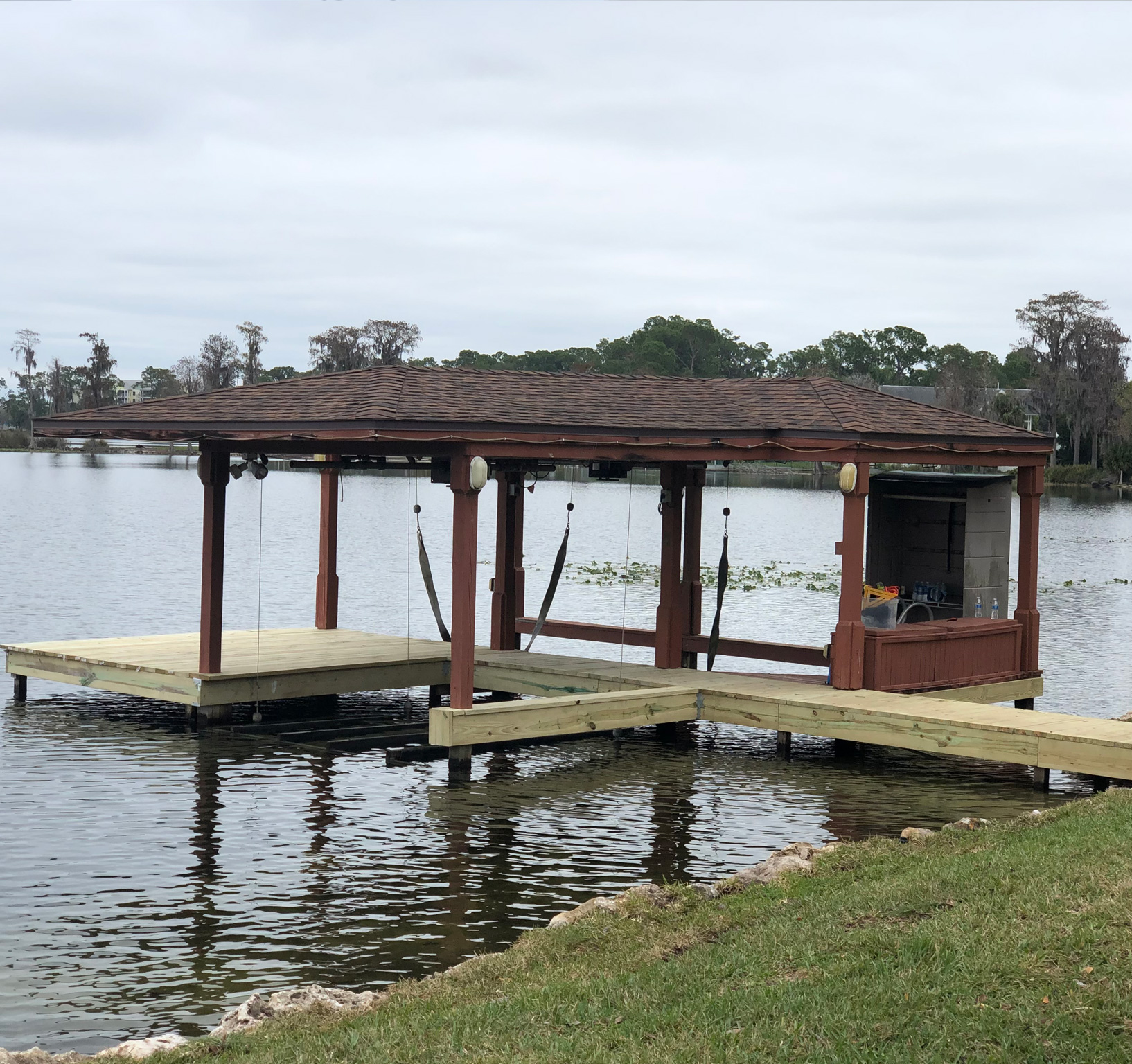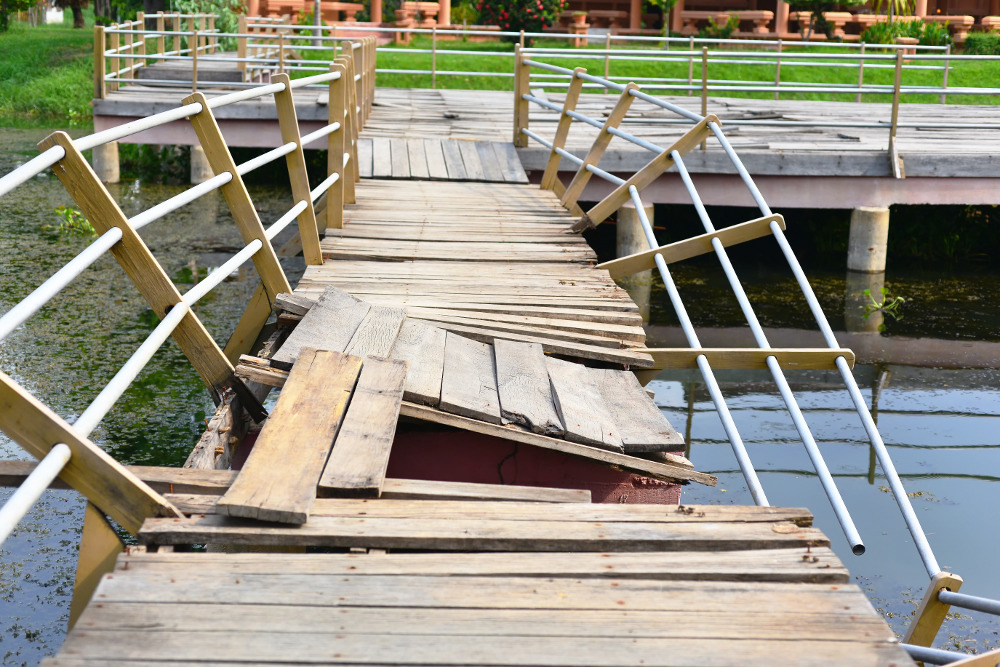Effective Dock Repair Work Techniques: Guaranteeing Structural Integrity
Ensuring the architectural honesty of anchors with efficient repair techniques is paramount for the long life and safety and security of aquatic facilities. This involves a multi-faceted approach beginning with detailed evaluations using advanced modern technologies like finder equipment and from another location ran cars (ROVs) to discover both noticeable and concealed damages. Ultimately, choosing the best repair products, such as corrosion-resistant alloys and composite products, is critical for longevity. Architectural reinforcement techniques, including the execution of cross-bracing systems and load-distribution plates, play a crucial role in mitigating stress and anxiety points. Nonetheless, the relevance of these techniques comes to be apparent when discovering sophisticated fixing techniques and preventative upkeep techniques.
Evaluating Dock Damages
Analyzing dock damage is an important very first step in guaranteeing the architectural honesty and security of any kind of docking center. This initial assessment includes a detailed examination to identify both visible and covert problems. Secret facets to check out consist of the dock's structure, pilings, outdoor decking, and equipment. Each part has to be scrutinized for signs of wear, rot, corrosion, or other forms of degradation that could compromise the architectural honesty.
Structural designers or certified examiners usually carry out these evaluations using specialized methods and tools. For instance, undersea examinations may utilize sonar tools or from another location operated vehicles (ROVs) to identify immersed damage. Above water, aesthetic evaluations are complemented by utilizing moisture meters and other analysis tools to uncover underlying concerns not right away visible to the nude eye.

Deciding On Fixing Products
Choosing the appropriate fixing materials is a pivotal action in the dock remediation process, one that straight influences the long life and performance of the fixed structure. Product choice must be driven by variables such as environmental problems, load-bearing demands, and compatibility with existing dock parts.
Along with wood, composite materials are increasingly preferred due to their longevity and low upkeep demands. Composites, generally made from a mix of plastic and wood fibers, supply outstanding resistance to rot, pests, and UV damage. For steel anchors, selecting corrosion-resistant alloys such as galvanized steel or marine-grade light weight aluminum is vital to protect against rust and make certain structural stability in saline water problems.
Epoxy resins and marine-grade sealers are essential for repairing fractures and securing joints, providing a waterproof barrier and boosting the dock's total strength. By carefully choosing high-grade products, dock repairs can achieve lasting results, consequently guarding versus future degradation and ensuring safe, reputable usage.
Architectural Support Methods
Effective architectural support methods are vital in guaranteeing the stability and long life of dock fixings. This technique is particularly effective for anchors subjected to heavy lots or extreme environmental conditions.
An additional necessary method is the application of fiber-reinforced polymers (FRP) These materials use high strength-to-weight ratios and outstanding resistance to corrosion, making them excellent for strengthening wooden or concrete docks. FRP can be used in sheets or strips and bonded with epoxy materials to improve structural stability.
Bracing and securing systems also play an essential duty in structural support. Cross-bracing, utilizing steel or wooden light beams, can combat side forces, lowering persuading and activity. Anchoring systems, such as helical piers or driven heaps, supply a stable foundation by moving loads to much deeper, more steady dirt layers.
Finally, the assimilation of load-distribution plates can help disperse weight more uniformly throughout the dock's surface, alleviating local tension factors. These methods jointly ensure that docks continue to be durable and risk-free, efficient in standing up to the roughness of their operational atmosphere.
Advanced Fixing Methods

One more sophisticated method involves underwater welding, which enables fixings to be performed without the demand to dewater the location. This technique is specifically beneficial for dealing with structural concerns in immersed dock elements, guaranteeing minimal disturbance to procedures. Improved welding techniques, coupled with robot systems, provide precision and integrity, therefore prolonging the lifespan of the dock.
In addition, cathodic defense systems are executed to avoid corrosion in metal dock structures. By making use of sacrificial anodes or pleased present systems, these strategies successfully reduce the electrochemical procedures that cause material damage.
Finally, advanced surveillance technologies, such as architectural health and wellness surveillance (SHM) systems, supply real-time data on the problem of dock structures. These systems allow proactive upkeep and timely interventions, inevitably making sure the long-term structural honesty of the dock.
Maintenance and Avoidance
Maintenance and avoidance are basic concepts that underpin the long life and safety of dock frameworks. Normal evaluations are extremely important, enabling very early detection of deterioration, possible weaknesses, and environmental influences. A proactive method, entailing routine checks for rust, rot, and architectural shifts, reduces pricey repairs and extends the dock's functional life.
Preventative measures must consist of using protective finishings to steel parts to go to this site guard against rust and utilizing cured timber to resist decay. Furthermore, making sure proper drain and air flow can avoid water buildup, which is a common source of architectural deterioration. Incorporating high quality materials and sticking to manufacturer guidelines during building and construction and fixing stages likewise play vital functions in boosting sturdiness.

Educating workers in dock maintenance ideal techniques guarantees consistent application of safety nets. Leveraging technological advances, such as drones for inspections and sensing units for real-time tracking, can further boost maintenance initiatives. By prioritizing upkeep and avoidance, dock owners can make certain structural honesty, operational safety, and cost-efficient administration over the dock's life-span.
Final Thought
To conclude, keeping the structural stability of marine centers demands detailed dock repair methods. Thorough assessments using sophisticated devices uncover both noticeable and hid damages, while the choice of appropriate fixing materials improves durability. Carrying out architectural reinforcement techniques addresses stress and anxiety points successfully. Advanced fixing techniques, combined with normal upkeep practices, guarantee the dock continues to be secure and operational under varied ecological conditions. Adopting these approaches significantly extends the go to my site life expectancy and capability of aquatic infrastructure.
Making certain the architectural honesty of anchors via reliable fixing strategies is paramount pop over to this web-site for the longevity and safety and security of aquatic centers.Picking the proper repair service materials is a critical step in the dock restoration process, one that straight affects the durability and performance of the repaired framework.Reliable architectural reinforcement techniques are critical in ensuring the security and durability of dock repair work. By prioritizing upkeep and avoidance, dock owners can ensure architectural stability, operational safety and security, and cost-efficient administration over the dock's lifespan.
In conclusion, keeping the structural integrity of aquatic facilities demands detailed dock repair work techniques.